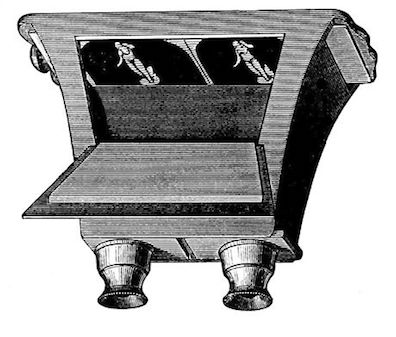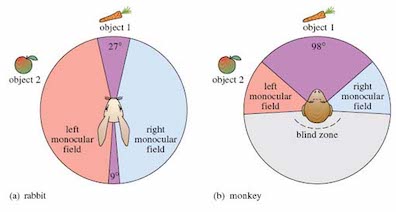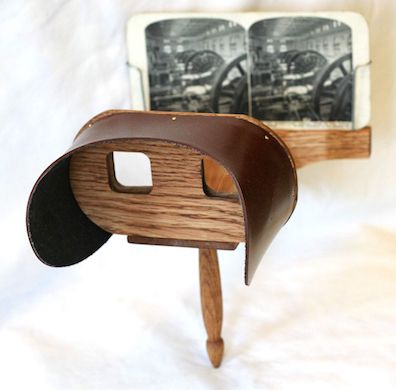Having struggled to see the world in Bishop Berkeley's way, as
colors on an essentially "flat" background, Stephen allows his
mind to snap back into its normal perception of depth: "Ah,
see now! Falls back suddenly, frozen in stereoscope. Click
does the trick." The stereoscope was a 19th century invention,
precursor to the 3D movie glasses and virtual reality headsets
of today, that allowed people to resolve a pair of flat,
two-dimensional images into one astonishingly
three-dimensional scene. First invented by Sir Charles
Wheatstone in 1838, it proved immensely popular and went
through many iterations by 1904. Stephen's comment seems to
reflect awareness that these devices take advantage of a
natural feature of human vision.
Binocular vision, which uses slightly different angles of
sight to determine distance to nearby objects, has operated
unconsciously in animal brains for millions of years. (The
trick is not confined to vision. Owl hearing accomplishes the
same thing with ears set at slightly different levels, and the
forked tongues of many snakes are thought to detect smells
with similar divided perception.) Human eyeballs lie in a
plane because we are primates who evolved jumping between tree
branches, where correctly estimating distance was essential to
survival. The same selective pressures helped predators gauge
distances to fleeing prey animals––whose eyes typically face
in opposite directions, giving them a larger total field of
vision to warn of danger. As primates and as predators, human
beings found it highly advantageous to have their eyes face in
the same direction, where slightly different impressions on
the retinas could provide depth perception across a broad
field. In the illustration reproduced here, the purple section
shows this broad binocular field in monkey vision. The grey
section shows the downside: a large blind spot, which rabbits
do not suffer from. (The narrow sliver behind the rabbit
should be colored grey.)
Stereoscopes reproduce the depth-perception effect by
mounting two images, drawn or photographed from very slightly
different perspectives, on a card and viewing them with
different eyes. The human brain melds the two images into a
single one that appears to have roundness and solidity. If it
seems a bit odd for Stephen to describe the normal binocular
vision that all human beings effortlessly possess as something
produced with the aid of a clever artificial device, the
reader may reflect that Proteus began with him
"walking into eternity along Sandymount strand" by closing his
eyes, only to decide upon opening them again that the physical
world was "There all the time without you." His experiment
with seeing reality as flat is of a piece with his
metaphysical effort to pierce through the veil of appearances
to the underlying truth. Stereocopic vision may be natural,
but that does not mean that it is inevitable or that it
fundamentally corresponds to reality. In Circe Stephen
voices the paradox of single eyes seeing flat images and pairs
of eyes seeing depth: "Distance. The eye sees all flat."
Some people saw great educational potential in the
stereoscope, while others scorned it as a cheap trick. The
French poet Charles Baudelaire lamented the spectacle of "a
thousand hungry eyes...bending over the peep-holes of the
stereoscope, as though they were attic-windows of the
infinite." Joyce was no less interested in the infinite than
Baudelaire, but he was fascinated by the new possibilities of
perception offered by technologies like the gramophone,
the photograph,
the mutoscope,
and the cinema,
and in some instances he clearly looked into the science
behind the new technologies. Parallax, a method of
determining astronomical distances which operates by the same
principles as the stereoscope, became a central organizing
theme in his novel.


